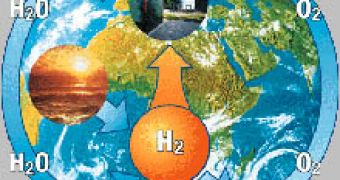Friday, the American researchers announced at Los Angeles the first electrically-assisted microbial fuel cell which is able to produce four times the quantity of hydrogen obtained directly from the biomass through typical fermentation. This power supplying solution can be modified to become a part of a hydrogen propulsion system, reducing in this way the costs of the water filtration operations.
Experts from the Pennsylvania State University together with Ion Power Inc. researchers have achieved a process that doesn't require oxygen to produce hydrogen from biomass. Until now, hydrogen resulted from biomass was a consequence of fermentation which was restrained by a fermentation barrier. This barrier imposes a small quantity of hydrogen and other components: acetic and butyric acids to be produced when there is no power boost.
However, by applying a small amount of electric current, 0.25 volts, you get a bigger quantity of carbon dioxide and hydrogen by passing the fermentation barrier of one, previously futile, component: acetic acid.
When the bacteria consume biomass, electrons are transferred to an anode. The bacteria also releases protons, hydrogen atoms without electrons, and the electrons from the anode migrate through a wire to the cathode, where they combine with the protons and so, the hydrogen is formed.
Simultaneously, this fuel cell is also used to filter the wastewater which produced it, requiring only a tenth of the electrolysis voltage.
This new method proves for the first time that there is a real potential in using hydrogen as a fuel. And considering the resources are renewable, this type of propulsion is also environment friendly.

 14 DAY TRIAL //
14 DAY TRIAL //